Before the transition from Out of Cards to Out of Games, there was a separate site for the latter, and we published a number of reviews of that site. This is one such review, in a form as close to the original as possible.
Metroidvanias! The genre that has probably benefited the most from the indie boom of the 2010s. There's a lot of games to choose from, and they're all fairly distinct from one another, while still maintaining some familiar elements to them.
Today, we have such a game! Haiku the Robot was made by Mister Morris Games who also provided the code for this review. It came out in April, and it got a little lost in the sea of other releases. While that's fitting for a game in this genre, we're here to hopefully prop it up a bit so that other people can give this little fellow a shot.
Let us take a look!
A Little Bot’s Tale
In a Post-Nuclear World

The game starts off in a cheery mood: with a nuke getting dropped on a city and wiping everything out! You then get a montage of stuff getting built over the wasteland, and robots taking over what's left of the world.
After a fade to black, we start hearing a voice telling us to wake up. We see our titular robot in a tube, hanging by some wires. After a mass of darkness comes out of our body (nothing to worry about, I'm sure), we're given control over the character and the proper game begins.
Haiku the Robot is a Metroidvania, and like any old-fashioned Metroidvania, you're not told what to do. You have no mission log, no objective; even the map is mostly hidden at this point. All you can do after the game begins is go right and explore.
Lose Yourself in It

Exactly what is happening, plot-wise, will remain a mystery for a good chunk of the game. Even after you meet a key character and they tell you what you have to do, you're still given no clue where to go next, no markers on the map for where you next objective is, nothing.
This is great if you want an experience that doesn't hold your hand, but it can work against Haiku. If you put the game down for a few weeks, you'll have no idea where you are and where you need to go. A sort of quest log or the ability to put custom markers on the map would've gone a long way.
Enemies are all varied, with only a few of them repeating between areas. Once you know how they operate, you'll be able to handle them fairly easily. The bosses, while difficult, all feel unique and figuring out how to take them down is a fun challenge.
Presentation-wise, the game is pixel-art, with a fairly unique color-scheme, filled with oranges and greys in the first area of the game. Despite the cute protagonist, the world is fairy oppressive, with a soundtrack that's quite creepy, only picking up during boss fights and in areas where there's more movement. It's not bad, but a faster tempo would have been appropriate in some areas.
All About Exploration
This Section's All About Gameplay
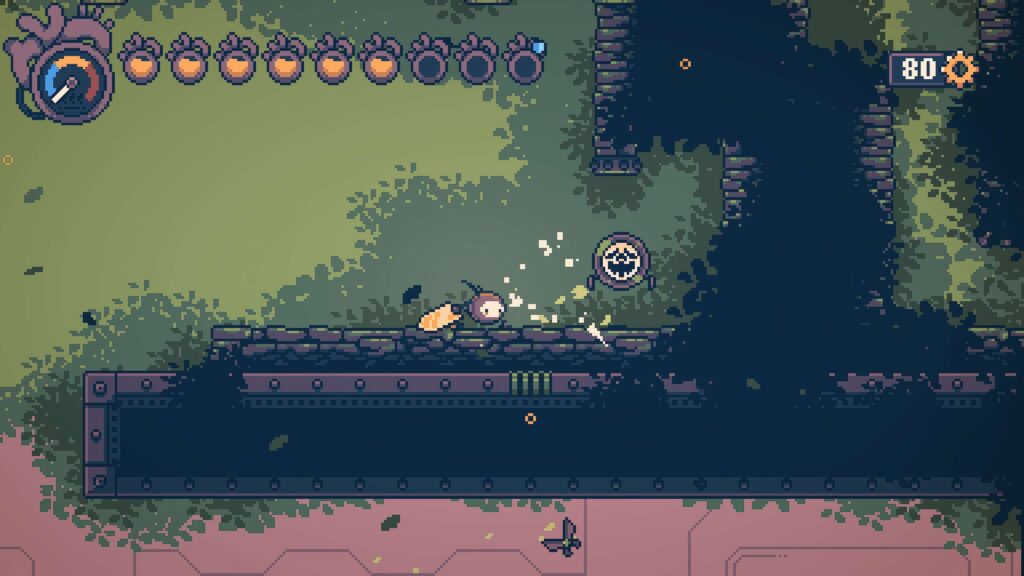
As mentioned, Haiku is a Metroidvania, and it's a fairly classic one. You start of with a basic swing attack with a sword, a pretty high jump, and a dash. As the game progresses, you'll unlock various upgrades, like a ball form, a wrench that lets you (very slowly) heal, a double jump, a teleport move for your dash, and a grappling hook.
The combat in the game is pretty straight-forward. You have a sword attack, which can cause some knockback that you can also use to stay in the air, although it's not necessary. Enemies will die from anywhere between 1 and 5 hits, and they're usually not aggressive towards you until the later areas of the game.
The bosses in the game can be fairly difficult and will take a few attempts to beat. Most of them have 2 phases, and they don't have a health bar, so you must stay on your toes until you beat them. Thankfully, there's save spots near most bosses - not right next to them - but close enough that backtracking isn't an issue.
You’ll Want to Befriend the Subway
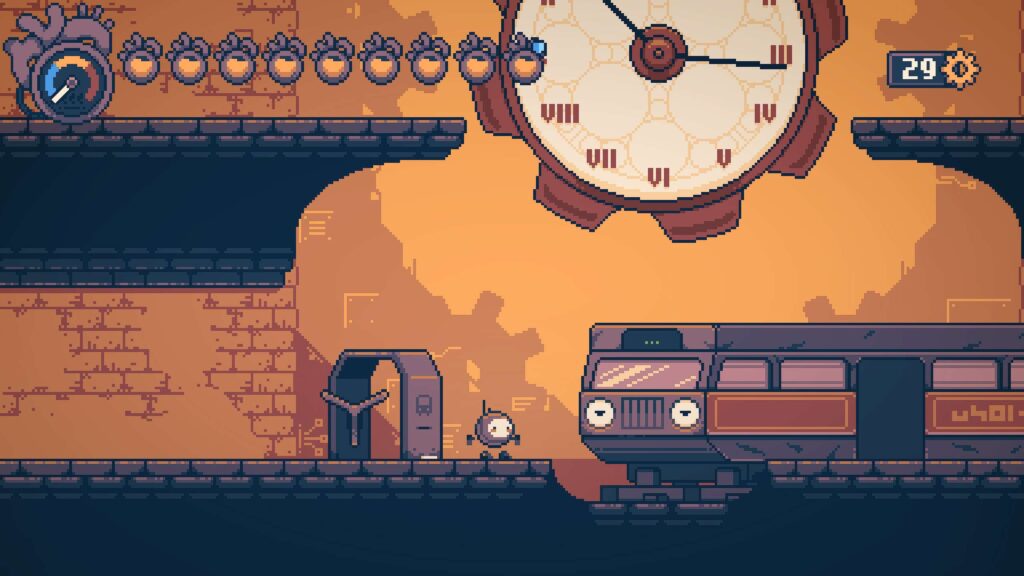
Speaking of backtracking, as with most Metroidvanias you'll often need to revisit old areas. There's a quick travel system via a sentient train (which doubles as a save spot and has a few vendors in it), but we feel like having one or two extra stations would've made revisiting old areas a bit less tedious.
The game is saved at so-called Repair Stations, which sadly are quite scarce. Yes, they're close to the bosses, as mentioned, but there's not that many of them. Thankfully, finding some secrets and dying will not reset their location, regardless of how long it's been since you last saved. If you want to leave the game early, though, make sure you've visited a Repair Station first.
The real issue is with backtracking. If you die after exploring for a long stretch, you'll have to walk for quite a while. This is mostly an issue in the early game, before you get used to your enemies and learn when to heal (more on that later). Still, a few extra Stations across the map would have been appreciated.
The Map is Quite Large

Oh, yes, the chip system! You'll be able to equip various chips during the game. They're split into 3 categories: Red for combat, like more damage or a longer sword; Green for exploration, like marking secrets on the map; and Blue for survivability, like losing fewer resources on death or extra HP.
There's a total of 28 chips to finds throughout the game. You'll be able to change those chips at the Repair Stations mentioned earlier, where you'll also restore your health. What you can't do here is store your resources; for that you'll need to use Perch Stations.
Leave the Spare Parts on the Perch, if You May
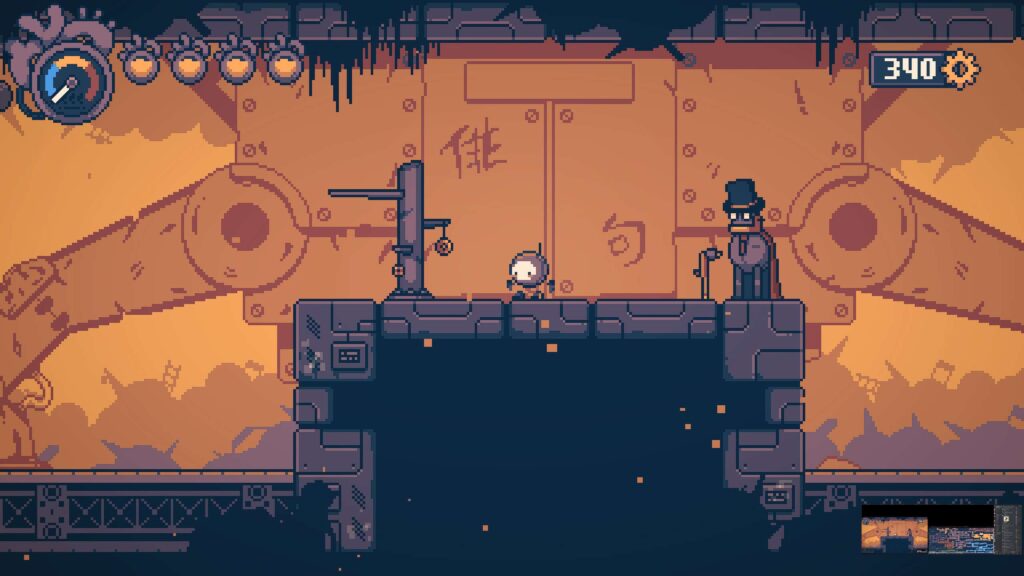
The game has a single, very important currency: Spare Parts. You get these from killing enemies and in various parts of the map, and you can use them to (very slowly) heal your character or spend them at vendors. By default, dying will make you lose about half of them, so make sure you don't have that many with you when facing a boss.
While at a Perch Station, you can transfer ALL your Spare Parts for safekeeping. What the game won't tell you is that you can hit Perch Stations with your sword to get a few of them back, so you don't return into the world with no way of healing.
There's 3 vendors in the game that sell various chips and other items, one on the fast-travel train and two in specific parts of the map. Also on the train is a big gear bot that will upgrade your health, and there's a slew of other characters you can encounter while exploring, including one that will slowly but surely mark objects on your map.
Our Final Verdict

Our playthrough clocked in at about 10 hours, but that's with quite a bit of getting lost, so the playtime will probably clock out at 8 to 9 hours for most people. The game is currently available on Steam and Switch for 20 USD or your regional equivalent.
If you like old-school Metroidvanias, you'll like Haiku. The world is a blast to explore, the bosses are challenging but fair, and the characters are fun to interact with.
We at Out of Games
Wholeheartedly recommend
Haiku the Robot
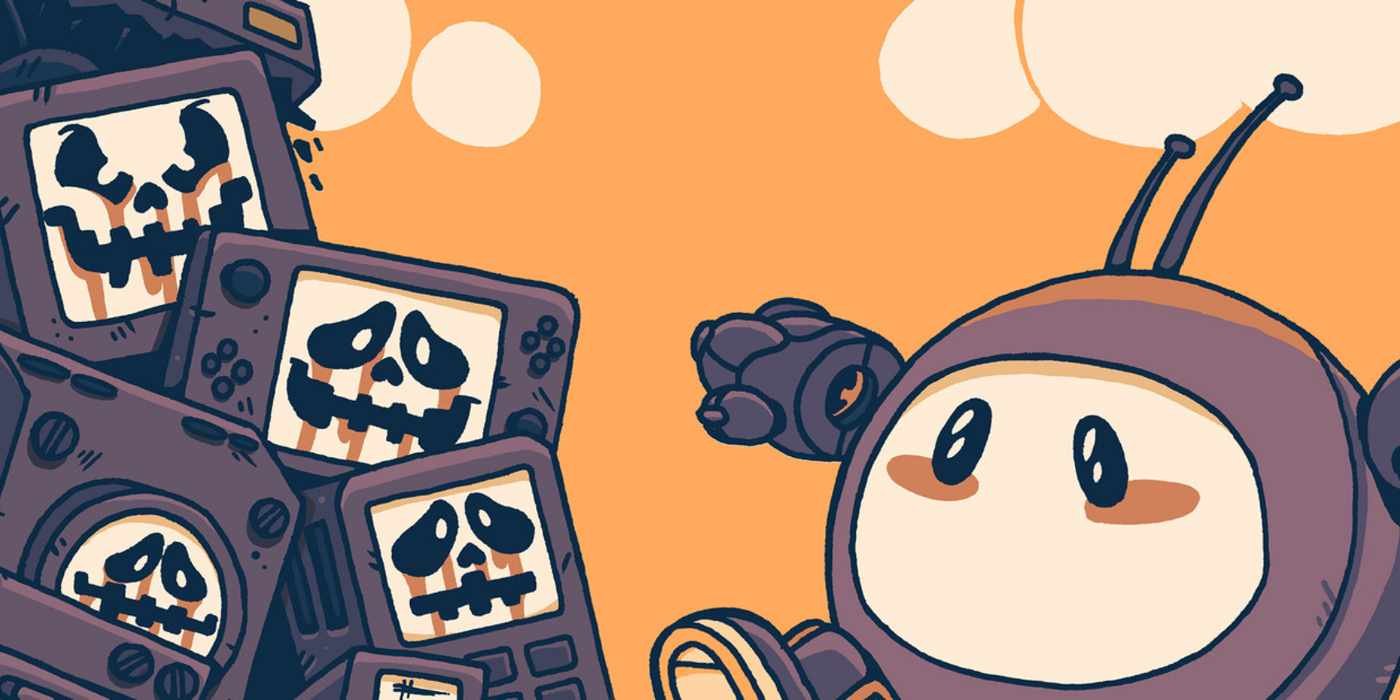
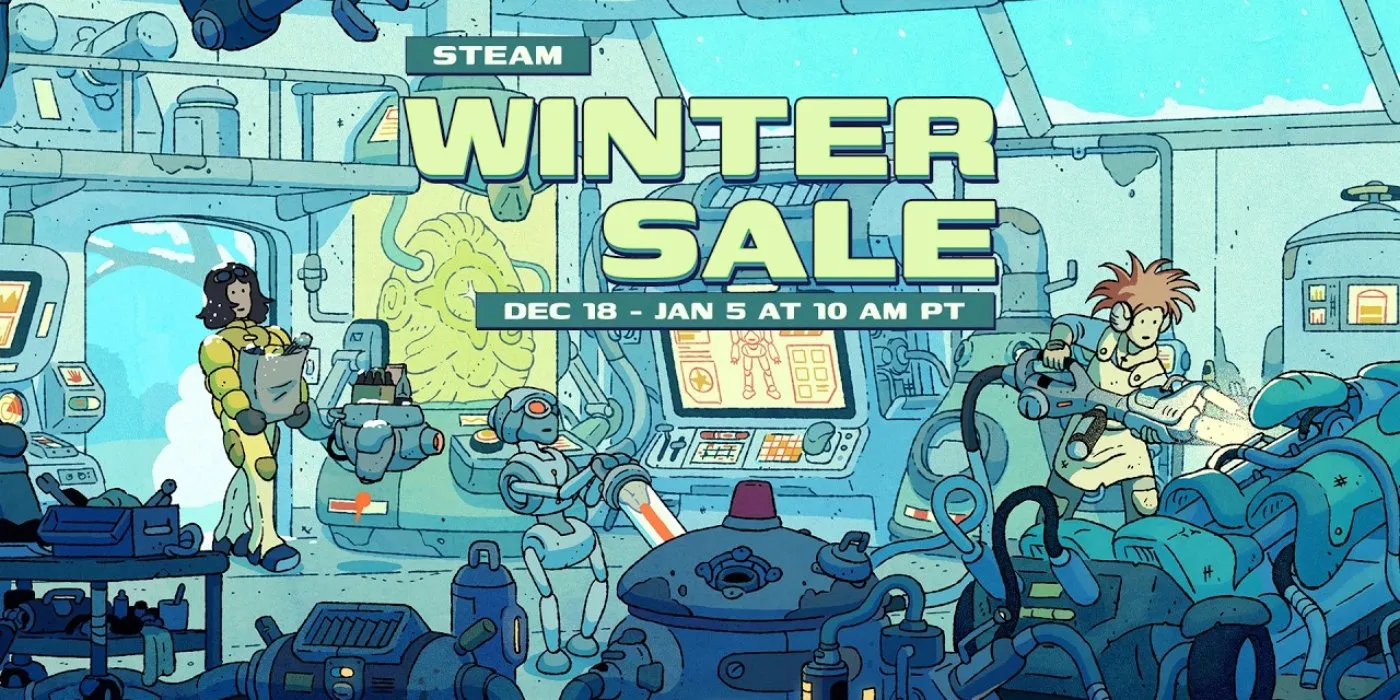
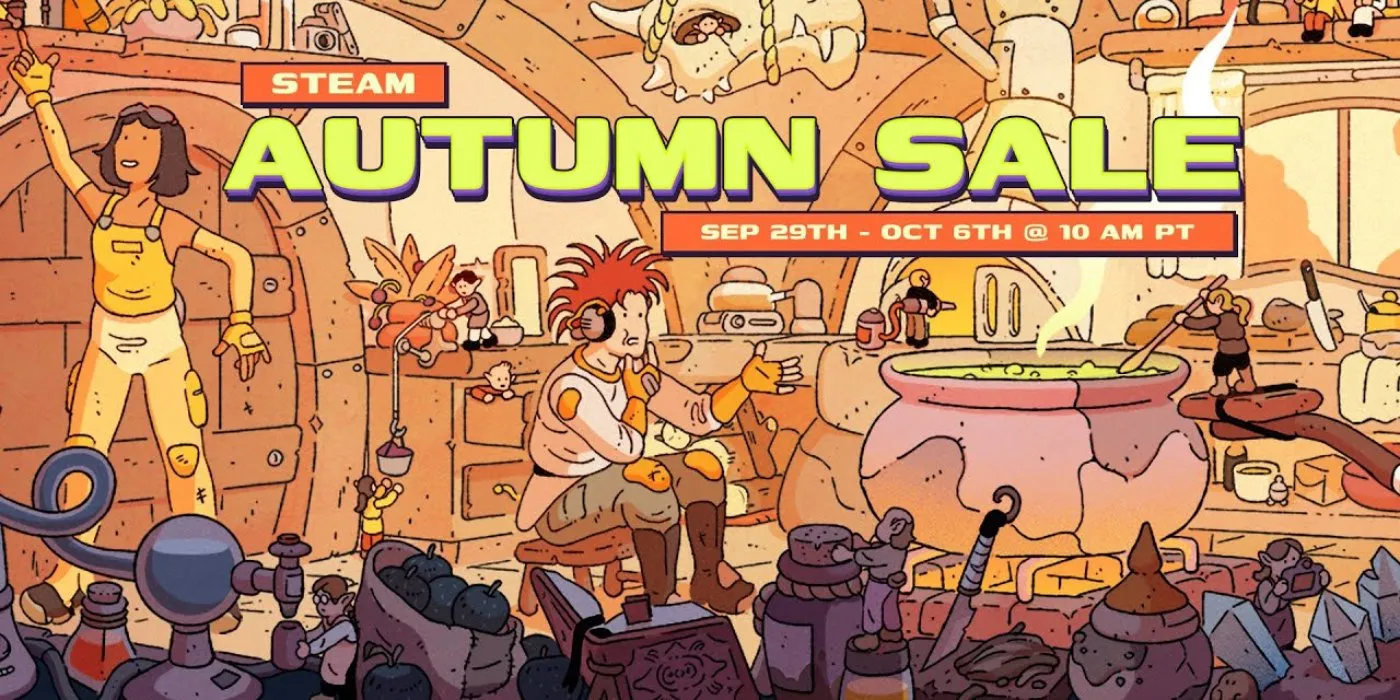
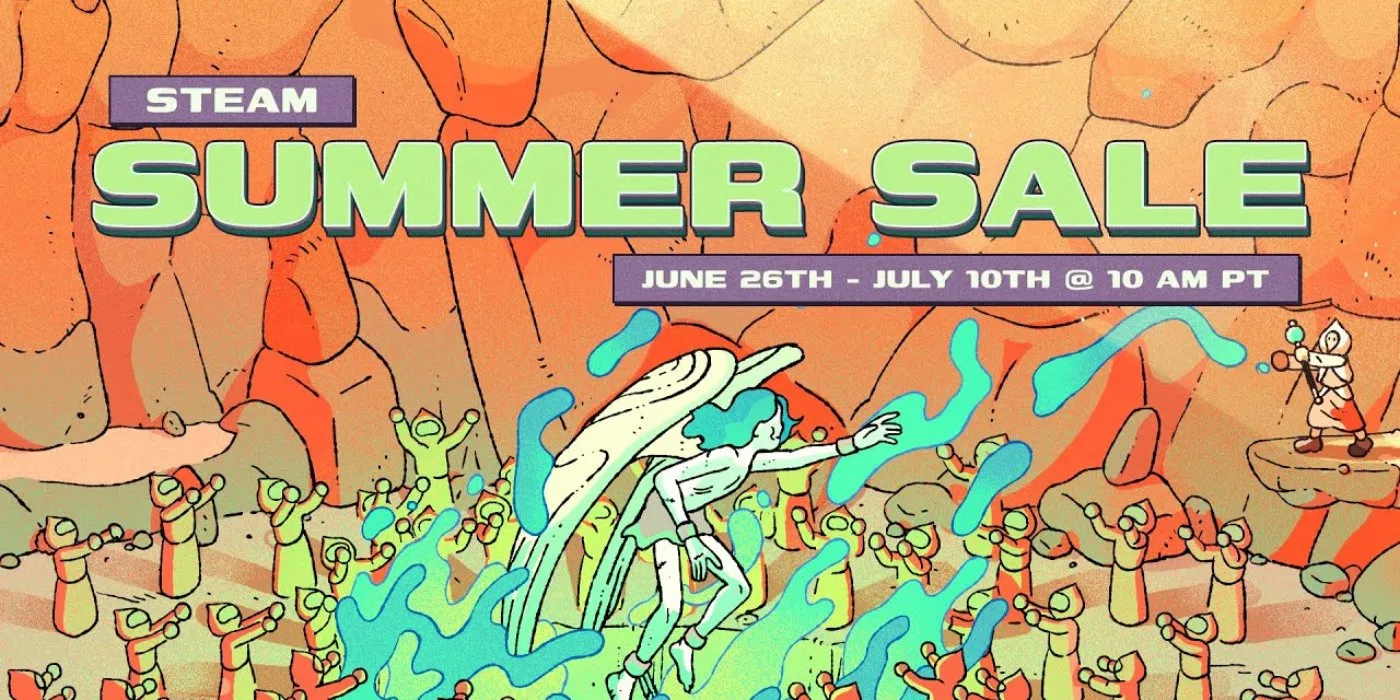
Comments
No Comments Yet. Be the first to create one down below!